How Are The Replicators Supposed To Work On Star Trek?
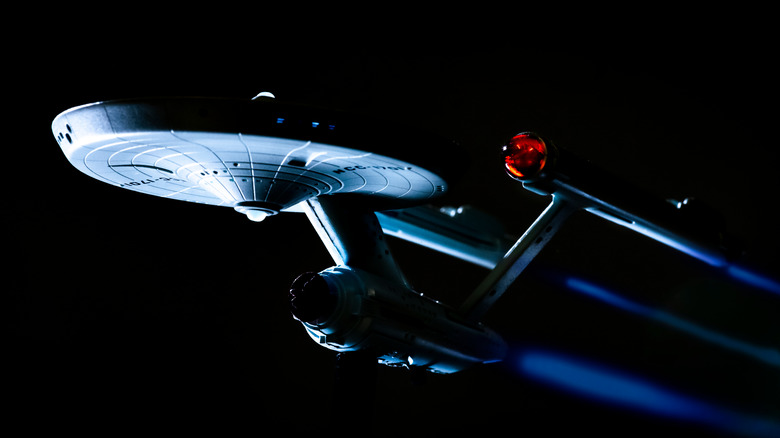
Coffee, black, or Earl Grey, hot? If you're a "Star Trek" fan, you've probably heard a character or two say these words. You might think of Captain Kathryn Janeway of "Star Trek: Voyager" and Captain Jean-Luc Picard from "Star Trek: The Next Generation" and "Picard" are just big breakfast drink fans, and they are, but they're also busy leaders of working space starships. They needed a way to get their favored drinks fast. So they turn to their replicators.
Replicators are essential machines in the "Star Trek" universe. This device can reproduce food, tools, and sometimes even random viruses. Depending on the writer's imagination, it can make almost anything. In times of need, the replicator is the only thing that can feed the crew. And being so far from Federation ports and basses, replicators were their best bet in getting that one part they need to fix their warp core containment.
While the replicator has made many appearances on the shows — Janeway even took hers apart in one episode — it's remains a tool of mystery to many. It acts a lot like a transporter, because it kind of beams food. So how are these things imagined to work in the first place? Of course, this is a starship, and the explanation is very sci-fi.

It's kinda gross, really
According to the "Star Trek" website , the reason some people see replicators as mini-transporters is because, well, it technically is one. In "Star Trek," transporters "beam" people and items to different places. They dematerialize matter and reconstitute it somewhere else. The replicator essentially acts the same way. So what matter does it work with? Comic Book reported the not exactly appetizing news. An episode of "Star Trek: Discovery" explained the material comes from fecal matter.
Replicators cannot make new matter because physics simply doesn't allow for that. In the "Trek" universe, scientists had developed a mixture of different materials specifically for food replicators, but it was a finite resource. And so the resource-poor Federation of Planets used something humanity never runs out of: Its own waste. The episode suggests that this sacrifice doesn't come at a human cost, which means the Federation can still claim the moral high ground against their enemies.
Replicators have been in use since the 24th century in the "Trek" universe , though very little has changed around the technology. No matter how advanced, a replicator will only make food programmed into its system. Even so, it beats having to sacrifice a lot of cargo space just to bring thousands of boxes of popcorn. Replicated food will taste mostly the same as the food it mimicked and will also have the same nutritional density. However, that has never stopped intrepid starship captains from bringing the real thing.
Real-life version
Having a replicator certainly means an ability to reproduce just about anything you can think of, provided it's programmed into the machine. So it's very easy to fall into the trap of featuring it in every episode. Bleeding Cool wrote that "Star Trek" writer and producer Ron D. Moore hated the replicator, and so did most people in the writer's room.
Moore said the replicators made everything too easy. If they were stuck somewhere, a character could just replicate something to get them out of a jam. So the writers sometimes avoided using replicators altogether in their episodes.
Fine, in a narrative sense, replicators may make things too easy. But imagine if there was a real-life replicator available. Then, we'd maybe get rid of food deserts once and for all. Fortunately for us, scientists have been working on recreating replicator technology. Per SyFy , researchers at the University of California, Berkeley invented a machine that projects light onto resin to produce an object in minutes. It doesn't re-materialize matter from subatomic particles, but it sure beats waiting hours watching a 3D printer squeeze out plastic.
The technology is based on computed technology, the kind of thing used in medical 3D imaging. The scientists call their new process computed axial lithography. It's not yet fully commercially available, so until then, we're stuck watching our favorite characters eat food replicated from poop.
It’s a wonderful world — and universe — out there.
Come explore with us!
Science News Explores
Could star trek replicators exist.
Experts break down what’s possible and what’s not for this sci-fi invention
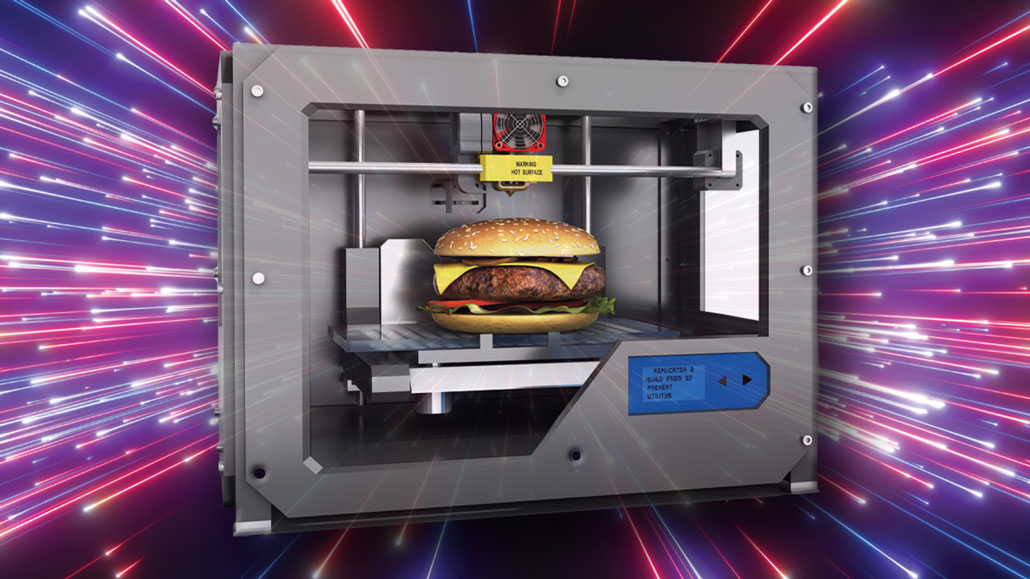
It’s not quite a replicator, but maybe future space travelers will be able to 3-D print dinner on demand.
REPLICATOR: WACOMKA/SHUTTERSTOCK; BACKGROUND: NOSOROGUA/SHUTTERSTOCK
Share this:
- Google Classroom
By Deborah Balthazar
September 5, 2023 at 6:30 am
Let’s say you’re hungry. Wouldn’t it be great to walk up to an appliance, tell it what food you want and have that food appear magically in front of your eyes? In the TV franchise Star Trek , this is possible with a piece of technology known as a “replicator.” Getting to a future where this tech exists, though, might take a bit of imagination and invention.
The Star Trek replicator is used to make all kinds of objects, from a hot cup of Earl Grey tea to spare parts for spaceships. Biowaste and other recycled material is broken down into basic parts: water, carbon and other molecules , explains Erin Macdonald. She’s an astrophysicist and science advisor for the Star Trek franchise. Those molecules are then fed into the replicator. When a person asks for an item, lasers reassemble the bits according to a recipe in the computer until it looks like that cup of tea, a dish of mint-chocolate-chip ice cream or a piece of a warp coil.
What, exactly, is the biowaste that goes into the machine? It will probably include poop, says Macdonald. “We don’t want to think about that too much.”
Educators and Parents, Sign Up for The Cheat Sheet
Weekly updates to help you use Science News Explores in the learning environment
Thank you for signing up!
There was a problem signing you up.
The replicator’s superfast lasers convert incoming matter into energy. Then, they change it back into matter . “On a fundamental level, there is nothing that prevents you from building a replicator-like machine,” says Gianluca Sarri. He’s a quantum physicist who works with lasers at Queen’s University Belfast in the United Kingdom.
But a replicator is just not a top priority at the moment, he says. All that conversion of matter to energy back to matter again would require a lot of energy. Plus, there’s no way to currently make an object appear within seconds. What’s more: Right now food can be generated in a much simpler way — by cooking.
Let’s print a meal
For now, astronauts eat food sent up from Earth. To make sure they get the food they need, future space tourists and crews might rely on hydroponics — growing plants without soil. Cooking that food in space like you do at home might be an option. But it might not always be practical inside the tight fit of a spaceship. So spacefarers might instead print that meal with a 3-D printer.
Today’s 3-D printers are similar to regular printers, notes Jonathan Blutinger. Just as normal printers must be fed cartridges of ink, 3-D printers must be fed cartridges of printing material. Blutinger is a design engineer.
While at the Creative Machines Lab at Columbia University in New York City, he helped create a 3-D printer that acts like a digital chef. “The printer will not allow you to make something from nothing,” he says. “You need to start with the right base ingredients.”
Blutinger’s group recently started with ingredients for a “cake.” They put graham-cracker paste, strawberry jam, peanut butter, Nutella, cherry drizzle, banana puree and frosting into the food printer. The printer assembled and cooked the ingredients with lasers to make a slice of cake.
The cake tasted great, Blutinger says, but it was definitely a unique experience because the flavors came in “waves.” The group’s paper about the cake appeared March 21 in npj Science of Food .
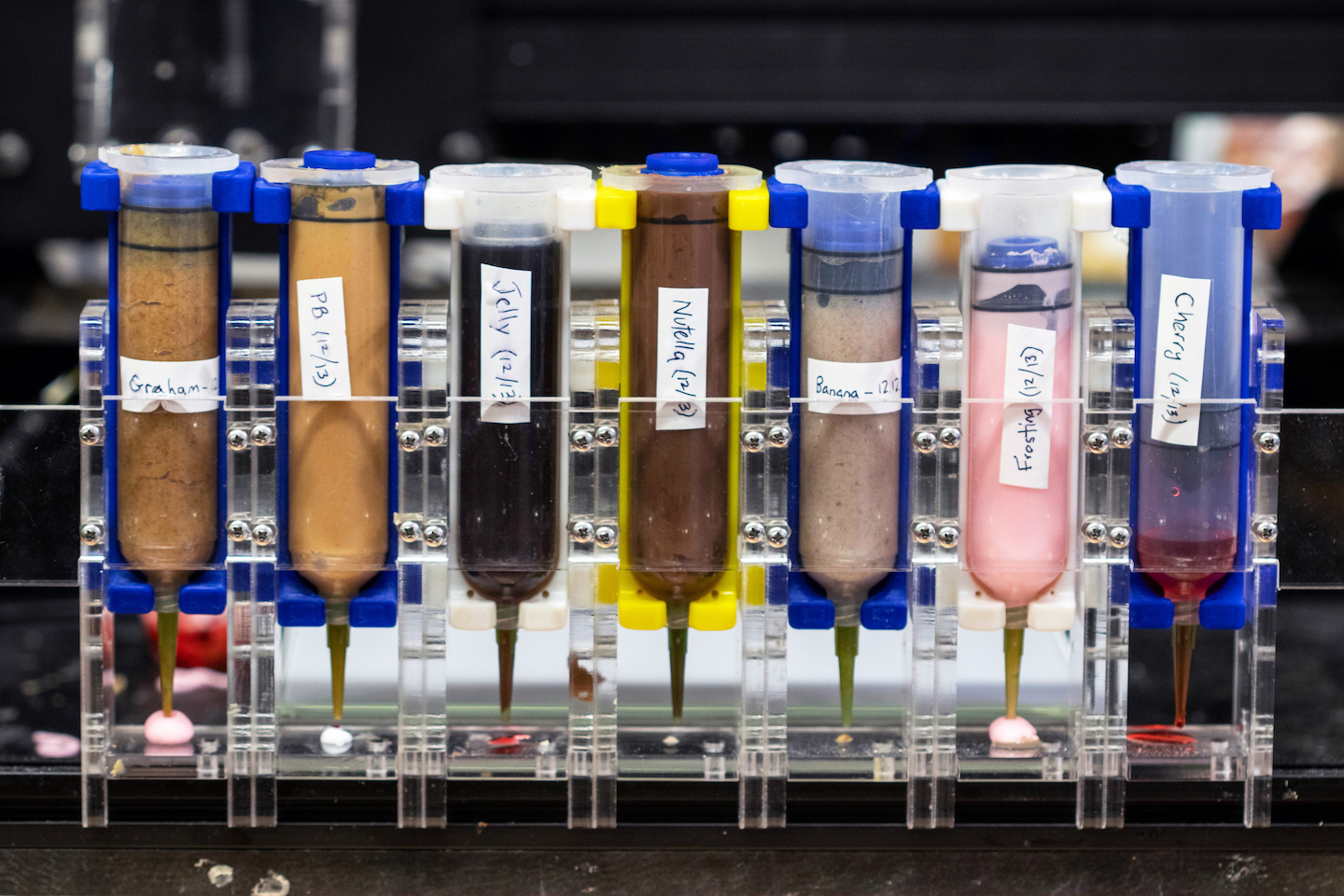
Appetizing or off-putting?
The 3-D printing robot chef can only assemble the ingredients it’s given and then add heat to cook the food. It cannot create foods from pure energy made from biowaste, like the fictional Star Wars replicator does. But people may not yet be comfortable eating even this relatively simple version of machine-made meals, Blutinger says.
Most people are comfortable with items like flour and peanut butter because we know where they come from. As science moves food away from the source, though, people could get grossed out. That 3-D printed cake might be easier for some to eat than 3-D printed meat, for instance. And people who did not grow up with 3-D printers in the kitchen might prefer food from the grocery store, Blutinger says.
“But pretty soon…kids will be growing up with these kinds of food robots in their kitchen,” he predicts. “Then that’s all they’re going to know.”
Macdonald agrees. “It’s just one of those things that people will have to come to terms with.”
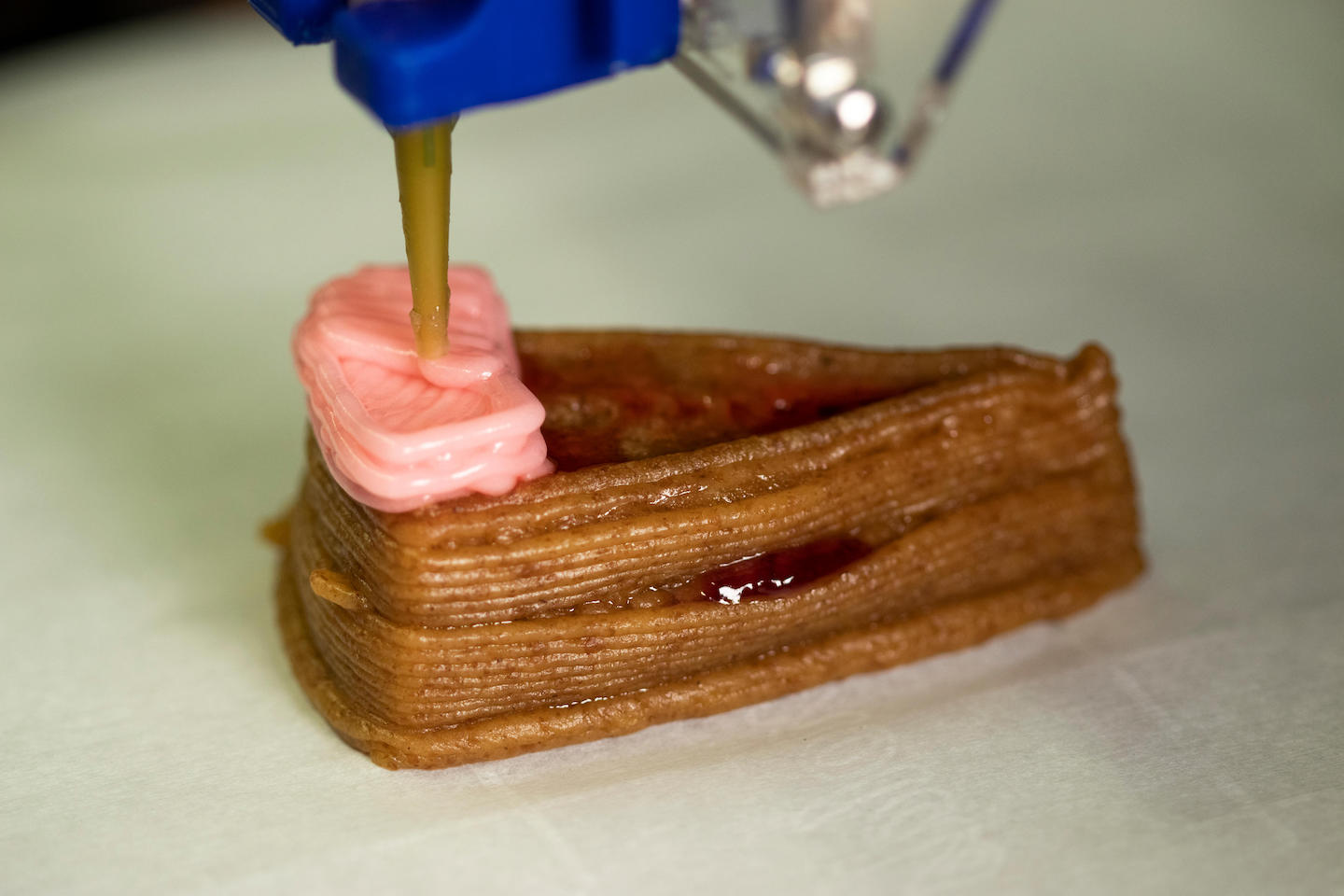
Food printers might be on our kitchen counters within the next 10 to 20 years, Sarri says. These printers could be like “having a personal chef and nutritionist all in one,” Blutinger adds. The machine could someday recommend and create healthier food that’s customized to your diet.
A Star Trek replicator might be possible, but not nearly as soon, says Sarri — maybe 100 years down the line. Those replicators of the future could be useful in areas in beyond outer space. They could provide food in places where putting a chef might be dangerous, such as a war zone.
“There’s a feedback loop,” Macdonald says, “of scientists being inspired by Star Trek and then making that science. And then that continues to feed into the science fiction of, ‘Well this is what we can do now, so what’s next?’”
The next tech to materialize might just be a replicator.
More Stories from Science News Explores on Tech
Scientists Say: Semiconductor

Here’s why AI like ChatGPT probably won’t reach humanlike understanding

Scientists Say: Digital Footprint

How to design artificial intelligence that acts nice — and only nice

‘Jailbreaks’ bring out the evil side of chatbots

A new tool could guard against deepfake voice scams

AI learned how to influence humans by watching a video game

Scientists Say: Bionic
In Star Trek, You Eat Your Own Poop: Or, Replicators Explained
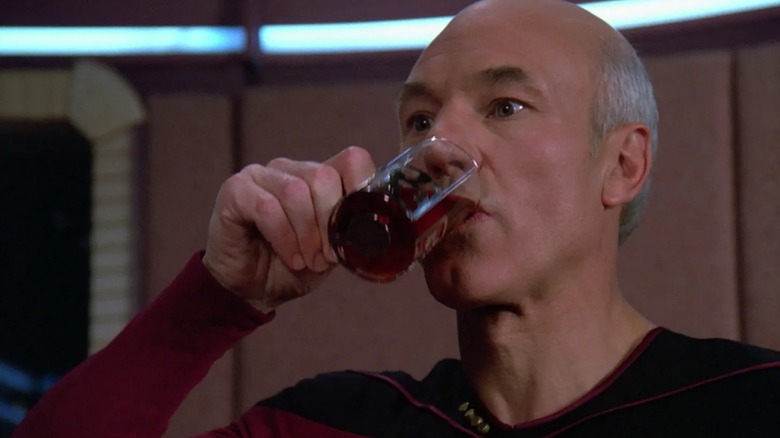
It took a long time for the writers of "Star Trek" to codify the technology on screen, so food replicators have been known by many names over the years. Sometimes it was called a molecular synthesizer, or a food synthesizer. Sometimes it would merely be referred to as a "food slot," which sounds less like a marvel of technology and more like an old-timey coin-operated automat . By the days of "Star Trek: The Next Generation," however, the name "replicator" finally stuck, and viewers could rest assured that a starship populated by over a thousand people has efficient means of feeding its denizens.
On-screen, replicators are perhaps one of the more magical technologies in "Star Trek." Replicators are small alcoves on the wall, equipped with a giant computer, usually located inside crew quarters. A crew member can walk up to the alcove, speak the name of a food or a beverage, and said object will instantaneously materialize. Provided the food or drink in question is programmed into the ship's database, anyone can have whatever meal they want at any time. Hunger is a thing of the past. All the replicator needs is information about cells and proteins, and the raw energy to make something. Captain Picard (Patrick Stewart) regularly ordered cups of Earl Grey tea during his shifts.
It turns out, though, that Picard might technically be drinking his own bodily waste. The dark secret of replicators is that they convert energy into matter, very much the same way the Enterprise's transporters do. That means, of course, that spare matter needs to be transformed into energy first. And where do you think that matter comes from? Longtime "Star Trek" technical advisor Michael Okuda confirmed that at least some of the replicators' energy store comes from matter salvaged from the ship's toilets.
The ship's galley
Of course, replicators weren't standard equipment on "Star Trek" until the days of "Next Generation." Prior to that, Federation starships seemed to have a few replicators that provided a few meals here and there, but most foods were still prepared in a galley, largely kept off-screen until "Star Trek VI: The Undiscovered Country." In that film, several senior officers had a conversation in the Enterprise's galley, and one of them even vaporized a steel cooking pot with a phaser. Comedically, the gluey porridge-like substance inside the pot was not vaporized and even kept its shape.
In the original series, however, it was always a little canonically hazy as to how widespread the replicator technology was. Generally accepted among Trekkies — but not necessarily canonical — is that chefs on the Enterprise could replicate small dishes or specific ingredients, but tended to use ingredients stored in an outsize pantry. If the Enterprise seems large, consider how much of its volume may be stocked with provisions. Doubtless, every space-saving measure is in play, but still, that's a lot of food. The original Enterprise's complement was over 400.
Replicators weren't yet invented in the days of "Star Trek: Enterprise," as that show saw humans encountering the technology for the first time. There was also a lot of talk on "Enterprise" about a character called Cookie, the show's unseen galley chef. Cookie would eventually be play-acted by Commander Riker (Jonathan Frakes) on the holodeck, and the character became strangely important in the show's final episode. Given the limitations of technology, one can imagine that the food on "Enterprise" wasn't very good. Luckily, Cookie only had to cook for 83 people.
But, yeah, you eat your poop
In the pages of the invaluable "Star Trek: The Next Generation Technical Manual," co-author Okuda noted how the Enterprise's replicators are tied directly into the ship's sewage system. Toilets aren't really seen much on "Star Trek," but Trekkies who have ogled blueprints all know where they are located. Okuda wrote that the crew's organic waste is "pumped to treatment and recycling units located in the environmental support complexes on Decks 6, 13, and 24." Via the ship's filtration process, "resulting water is superheated to 150°C for biological sterilization." Once sterilized, the urine is "returned to one of several freshwater storage tanks for reuse." Yes, there is a store of fresh water on the Enterprise-D. Yes, it's made from pee.
As for the solid waste — or, in Okuda's words, "various waste sludges" — it is "electrolytically reprocessed into an organic particulate suspension that serves as the raw material for the food synthesizer systems." Then all of the "remaining byproducts are conveyed to the solid waste processing system for matter replication recycling." Matter replication recycling. They recycle poop into food.
Yes, it's mere energy by the time it makes its way to the replicator's energy systems, and naturally, the bacteria have all been removed, but the people on "Star Trek" are such efficient recyclers that they do indeed eat their own poop. Also, all their other trash. All waste matter — old clothes, dated tech, or mere trinkets you don't want anymore — can be placed on a replicator and de-materialized back into energy at a moment's notice. It's then reused to make new foods and objects. However, the dematerialization process wouldn't be demonstrated on-screen until an episode of "Star Trek: Voyager."
The limits of replicators
Of course, "Star Trek" technology requires limitations, otherwise a lot of dramatic tension would be broken. It's been implied many times over various Trek series that replicators require a lot of energy to operate. Hence, a prankster can't program a replicator to keep making food until the ship's hallways fill with SpaghettiOs and the hull begins to buckle. This notion was reinforced by the events of "Star Trek: Voyager," which saw its title ship stranded 70 years from home. To save energy, replicator access was rationed, a hydroponics bay was erected, and a galley was built. The ship needed a sustainable food source, and replicators weren't it. This became an issue when Captain Janeway's beloved coffee beans were nowhere to be found.
It's also repeated throughout Trek that replicated food ... isn't that good. Several characters note that they can taste when food is synthesized, leading to many amateur chefs trying their hand at cooking in their quarters. It seems some galley equipment is always on hand, just in case. Replicators, though, seem to leave little room for culinary alteration of its programs.
As previously noted in the pages of /Film, alcohol cannot be produced by a replicator. Ancillary technical manuals also explain that poisons can't be replicated. Although whether or not benign ingredients for one species may be poisonous to another hasn't yet been addressed in canon. Perhaps the replicators make foods that are acceptable to every digestive system on the ship.
Replicators are also only capable of replicating smaller objects. No one on "Star Trek" has ever been seen replicating anything larger than a coffee table book. One cannot replicate, for instance, an entire starship.
Of course, if you can replicate a starship, you'd likely be so powerful that you wouldn't need to.
Star Trek: How Do Replicators Work?
What makes this interesting sci-fi tech so revolutionary, and what are its limitations?
The Star Trek universe is arguably one of the most interesting sci-fi creations of our time. It cleverly combines human social commentary with a broadening spectrum of possibilities for the future. Star Trek contains many possible answers to everyday problems that exist in modern society, but also paves the way for technology that is theoretically feasible to be created in the future. These technologies are based on principles already being discussed and trialed within the world today. One example is the transporter, which allows matter to be deconstructed and then reconstructed in a different place, essentially allowing teleportation. Another is the Warp Drive, allowing ships like every iteration of USS the Enterprise to bend time and space. This allows them to to travel from one end of the galaxy to another, faster than the speed of light.
But one of the most incredible pieces of technology in the Star Trek Universe are replicators. These gadgets can recreate matter of all kinds, from substances like wood and metals, to material objects, to food fit for human consumption. Although this may seem at first like it would create an absolute utopia where no one ever has to go without, there are several things that get in the way of solving world hunger, one replicator at a time . These include societal constraints of access to the replicators as a monetary commodity which are unaffordable. There are also limits to the functions of replicators themselves, which have their own list of rules that their technology must adhere to. Knowing this, how does this miracle technology work?
RELATED: Star Trek: Who Was Lwaxana Troi?
When replicators were introduced as a staple use for the Federation in The Next Generation , they were explained as being able to reconstitute inanimate matter, by essentially cloning the original material that is placed into the scanner. The computer would ingest all the individual components or cells of the object, and then produce an exact copy of them cell by cell. It then reproduces those to create an artificial version of the original item.
Unfortunately, as this is a complicated process, the output of the replicator is never as good as the original version. Often, the food doesn’t taste the same, or the clothing doesn’t retain the same color or feeling as the original. It is important to remember that the replicators may be recreating an original that was scanned several decades ago. As such, it may have produced a diluted version of that original object. This is just one reason why the Federation are against using replicators to recreate organic or living material. For example, they would not allow replicators to recreate organs, or entire human bodies, despite it being theoretically possible.
Replicators do not work like Star Trek’s transporter technology . Transporters essentially take all the components of the original things and simply reconstruct it elsewhere. It's like building a structure out of Lego bricks in the living room, taking it apart to its individual pieces, and then rebuilding it in the garden. On the other hand, replicators do not retain the original material. Rather, they recreate a separate version of it, a version that is often considered lesser in some ways. In using replicators to try to recreate life or living matter, the Federation would be going against the fundamental moral and ethical guidelines of their organization. So although it is demonstrated to be possible by other races in the series, it is strictly prohibited by the Federation.
Beyond the ethical limitations placed on replicators by the Federation, there are technological limitations to how they work as well. The replicators work primarily by converting energy into matter. While the specifics of this are not officially canon, the general consensus is that they use the energy they are fed to rearrange an array of easily accessible atoms into whatever they are asked to create. Things like food and clothing are fairly simple (at least for a futuristic sci-fi supercomputer), because they are made of accessible molecules that are simple to create molecules. A t-shirt, for example, is most likely made from 100% cotton. Cotton is composed of pure cellulose, a polymer that is made up of hydrogen, carbon, and oxygen atoms. These are all easily accessible and creatable for the computer.
The more complex the creation, the more power the replicator needs. This concept is explored in the Voyager series, where power is limited and each member of the crew has replicator rations to help save energy. Tom Paris, argumentative ship pilot, uses a replicator to create a gold locket. This is suggested to have taken up a lot of his rations, as it was much harder for the machine to create. On other ships not restricted by power, this is still an issue. No ship in the Star Trek universe possesses enough power to create things like lithium, antimatter, or dilithium (a rare substance not found on Earth) . These are far more complicated, relying on multiple fusions of atoms and complex molecule strains. It’s why the notion of industrial replicators are so pivotal to the infrastructure of the Federation. These devices are created specifically and given ridiculous amounts of power; thus they are able to cope with far more complex replications.
MORE: Star Trek: Why The Enterprise-D Was Badly Designed
Memory Beta, non-canon Star Trek Wiki
A friendly reminder regarding spoilers ! At present the expanded Trek universe is in a period of major upheaval with the continuations of Discovery and Prodigy , the advent of new eras in gaming with the Star Trek Adventures RPG , Star Trek: Infinite and Star Trek Online , as well as other post-57th Anniversary publications such as the ongoing IDW Star Trek comic and spin-off Star Trek: Defiant . Therefore, please be courteous to other users who may not be aware of current developments by using the {{ spoiler }}, {{ spoilers }} OR {{ majorspoiler }} tags when adding new information from sources less than six months old (even if it is minor info). Also, please do not include details in the summary bar when editing pages and do not anticipate making additions relating to sources not yet in release. THANK YOU
- View history
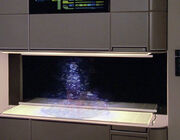
A replicator is a device that uses transporter technology to dematerialize quantities of matter and then rematerialize the matter in the form of another object, such as food or equipment. By the 24th century , replicators were a common piece of equipment aboard Federation starships and facilities.
Prior to replicators, some races have been known to use simpler devices called protein resequencers . ( ENT episode : " Fight or Flight ")
- 1 Food replicators
- 2 Industrial replicators
- 4.1 References
- 4.2 External links
Food replicators [ ]
Lambert and Whitaker invented an early type of replicator. ( DS9 novel : Hollow Men )
Despite replicated food and drinks being practically identical to their real counterparts, some people claim to be able to tell the difference between real and replicated foodstuffs and maintain supplies of their favorite food and beverages from more traditional sources. This may be due to the fact that molecular level resolution is used with replication, rather than quantum level resolution used with life forms - which causes single bit errors to often appear in replicated items. Federation replicators can produce a very wide variety of materials, but as a safety precaution are generally programmed not to be able to produce fatal poisons. Additionally, there are limits to replicator technology and certain complex materials cannot be replicated. Power requirements become prohibitive for larger items, which is the reason why space vessels are still constructed instead of replicated. Due to the single bit errors created by the replication process, some foodstuffs can become mildly toxic and once noted, their use is avoided in replicated dishes. ( TNG episode : " Sins of the Father ", DS9 episode : " Blaze of Glory ", VOY episode : " Death Wish ", and Star Trek: The Next Generation Technical Manual )
In addition to being programmed to keep poisons from being produced, safety routines on Federation starships also would not allow weapons to be produced without authorization from the ship's security chief or captain. ( TNG novel : Reunion )
By the 24th century, replicators on Federation starships made extensive use of sewage, left over food, and other waste products produced by the crew. These items were extensively sterilized through heat and pressure while being transformed back into raw material for the replicators. ( TNG reference : Star Trek: The Next Generation Technical Manual )
While in talks with the Emerald Chain leader Osyraa , Federation Admiral Charles Vance made sure to point out that replicated food was "made of our shit" while she was eating a replicated apple. ( DSC episode : " There Is A Tide... ")
On the USS Enterprise -D replicator food selection was controlled by computer core subroutine C47. When a computer interface experiment conducted by Lieutenant commanders Geordi La Forge and Data malfunctioned, certain parts of the routine were replaced with some of Commander Data's programming. Among other things, food replicators on six decks of the Enterprise began producing nothing but cat food as Data had been working on new nutritional supplements for Spot . ( TNG episode : " A Fistful of Datas ")
Industrial replicators [ ]
In addition to the standard food and equipment replicators, Starfleet operates larger industrial replicators . Two class four industrial (CFI) replicators were given to the Bajorans to help in rebuilding efforts following the Cardassian Union 's Occupation of Bajor . Twelve CFI replicators were shipped to Deep Space 9 to be given to the Cardassians following the initial Klingon invasion of 2372. The shipment, however, was intercepted by the Maquis , with the assistance of Starfleet officer Michael Eddington . ( DS9 episode : " For the Cause ")
It was possible to determine if an item had been replicated by analyzing the atomic structure. ( DS9 novel : Warped )
However, many other races in the galaxy had not developed replicator technology and are often interested in learning about the technology. When the USS Voyager was pulled into the Delta Quadrant in 2371 , the Kazon became increasingly interested in replicator technology after they observed that it could seemingly create water from the air. Later attempts to try and create their own replicators led to an accident, and the various Kazon sects then attempted to acquire the technology directly from Voyager . ( VOY episodes : " Caretaker ", " State of Flux ")
See also [ ]
- Protein resequencer
Appendices [ ]
References [ ].
- PIC novel : Firewall
External links [ ]
- Replicator article at Memory Alpha , the wiki for canon Star Trek .
- 1 ISS Enterprise (NCC-1701)
- 3 Ferengi Rules of Acquisition
Create a free profile to get unlimited access to exclusive videos, sweepstakes, and more!
Star Trek replicator finally replicated by real-life scientists
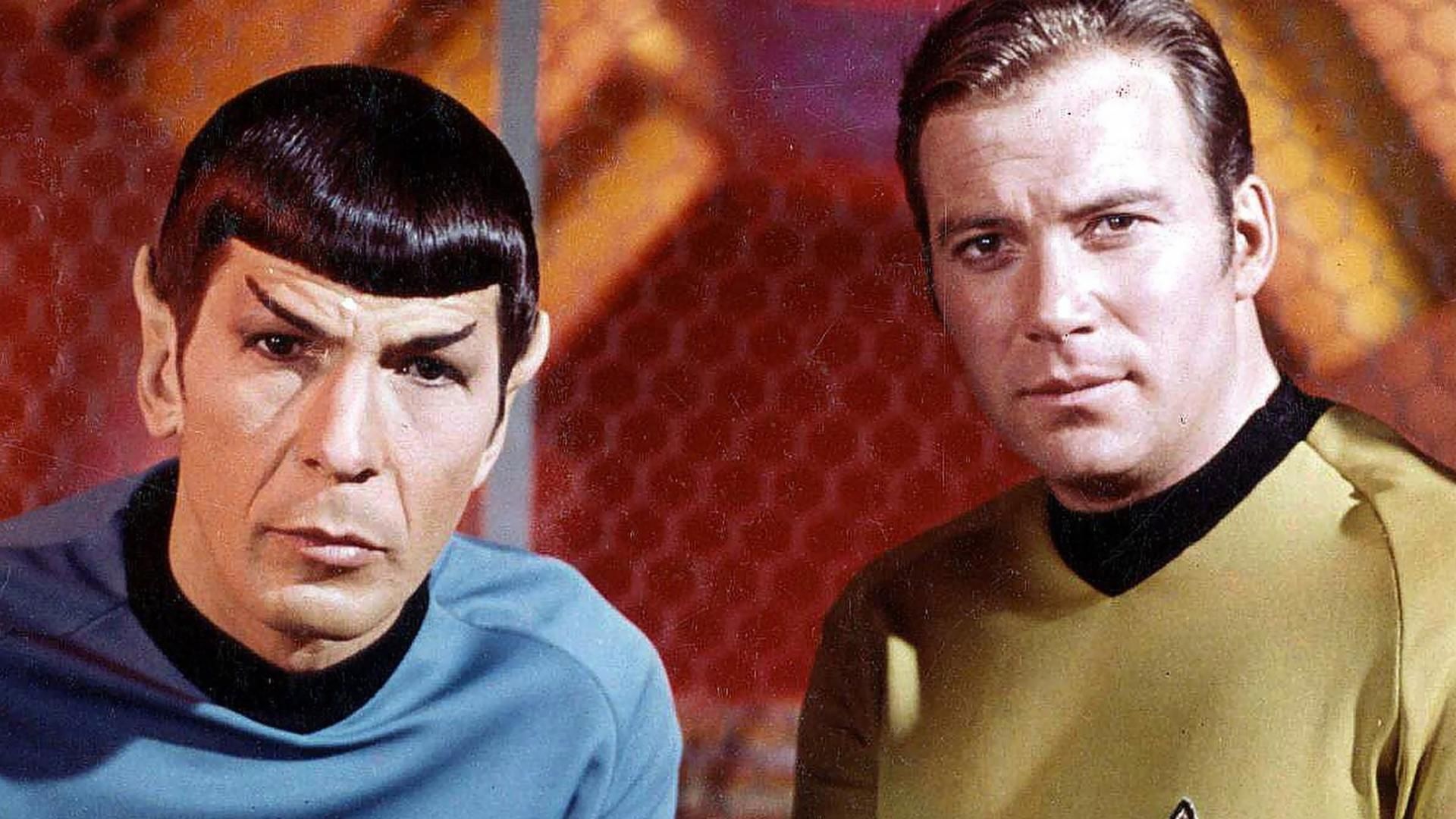
Credit: CBS Studios Inc.
Star Trek has been prescient about future technology ever since showing off a nascent cell phone in the pilot episode of the original series. But that doesn’t make the creation of this real-life replicator any less astonishing.
Throughout the incarnations of Star Trek , the replicator has produced a variety of human necessities to the good Starfleet folks exploring the outer reaches of space, primarily food and drink, but also spare parts, uniforms, and even breathable air. But as far as we know, they never instantaneously produced a miniature replica of Rodin’s “The Thinker.”
Intrepid researchers from Lawrence Livermore National Laboratory and the University of California, Berkeley have done just that, and created a wholly different approach to 3D printing. Amazingly, it looks very much like Star Trek’ s replicator, but instead of fictionally dismantling objects into sub-atomic particles or actually slowly 3D printing something layer by layer, the new approach projects light into resin, which produces small objects in a matter of minutes.
The new technology is based on the principles of computed tomography (CT), frequently used in medical and industrial 3D imaging, but never before used in the process of fabrication. But where traditional 3D imaging takes multiple X-rays to produce a 3D map, this tech reverse engineers the 3D object into 2D components, which are then projected as slides of light into the gooey resin.
"We saw that the underlying theoretical framework of CT could be adapted in a powerful way to generate arbitrary 3D geometries by building up a light dosage distribution within a volume of light-sensitive material from many different illumination angles," electrical engineer and UC Berkeley assistant professor Hayden Taylor told SYFY WIRE via email. "Once we had made the initial demonstration of the technology, the analogy with 'The Replicator' suggested itself to a couple of the students working on the project, and it stuck!"
“Our new process is called Computed Axial Lithography (CAL), and prints entire 3D objects into light-sensitive materials all at once,” Taylor told Digital Trends . “The process involves rotating a container of light-sensitive material, while projecting into it a sequence of computed light intensity patterns that are synchronized with the rotation. Over time, a 3D pattern of light energy is delivered to the material by more than a thousand different projections. Where the energy delivered exceeds a critical threshold, the material undergoes a chemical reaction and the part is formed.”
Check out the Nature Video above to get a better understanding of the process, or read the paper, "Volumetric additive manufacturing via tomographic reconstruction," published via Science .
This is impressive tech, no doubt, and will likely lead to a wide range of printable opportunities, including much larger objects.
"We expect (but have not yet shown experimentally) that it should be possible to print objects up to 0.5 meter diameter with features down to 0.1 to 0.2 mm at a rate of several liters per minute using a high-end 4K projector," Taylor told SYFY WIRE. "Of course there will no doubt be plenty of engineering challenges to be addressed on the way, but we have not yet identified an insurmountable limitation to scaling of the process."
So who knows, maybe they’ll be able to replicate that transporter we’ve all been hoping for.

Related Stories
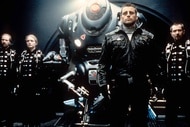
How 1990s Lost in Space Movie Was Meant to Launch a Franchise

Deep Sea Animated Fantasy Film Streaming Now on Peacock

How The Chronicles of Riddick Turns a Simple Sci-Fi Story Into Dune
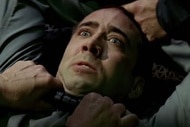
Face/Off Remains One of the Best & Wildest '90s Action Movies
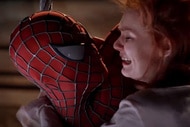
Kristen Dunst Reveals Dangerous Spider-Man Stunt She Refused

Michelle Rodriguez reflects on Fast Saga's hip-hop ethos

Bruce Almighty Writers Pitched Devil-centric Sequel

Why Fast Five Remains One of the Greatest Films in the Fast Saga

R.I.P.D. Creators Talk Abandoned Franchise & Resurrection Hopes

Why Tokyo Drift is the Perfect Fast & Furious Spinoff

Flushed Away Director On Aardman's First CG-Animated Feature

Anthony Mackie On John Doe Vs. Sam Wilson
Recommended for you.

Linda Hamilton on Resident Alien Role: "I'm Not the Funny Girl, I'm the Straight Man"

The Classic Twilight Zone Episode That Inspired Jordan Peele's Us

Resident Alien's Alan Tudyk on Harry's New Love Interest, Edi Patterson's Blue Avian
Smithsonian Voices
From the Smithsonian Museums

SMITHSONIAN BOOKS
The Influence of Star Trek and Science Fiction on Real Science
For Star Trek Day, learn about the relationship between sci-fi and real-life science in this excerpt from “Reality Ahead of Schedule”
:focal(800x602:801x603)/https://tf-cmsv2-smithsonianmag-media.s3.amazonaws.com/filer_public/b0/96/b096b98c-3581-4361-a150-3b7e655816b9/starship_enterprise.jpg)
As with several other iconic Star Trek technologies, replicators are directly responsible for inspiring developments in real-life technology, which use 3-D printing to create food, meals, plastic and metal items, buildings, and even complex machine parts. Star Trek is far from being the only sci-fi source of inspiration for the dream of a device that can produce finished items from scratch.
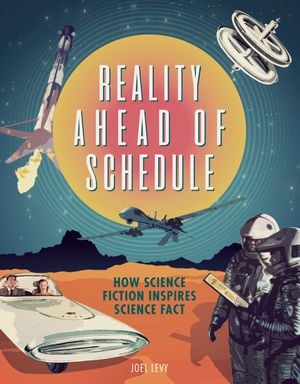
Reality Ahead of Schedule: How Science Fiction Inspires Science Fact
A rich visual history of science fiction's impact on real-world technologies, this book is perfect for lovers of H. G. Wells, Star Trek, Isaac Asimov, Jules Verne, Aldous Huxley, and 2001: A Space Odyssey.
To trace the roots of Star Trek ’s replicator, it is necessary to understand that it is essentially a repurposed form of the transporter—the teleportation or matter transmission device that “beams” the crew between starship and planet surface. According to legend, the transporter was invented only because the original series lacked the budget to film special, effect-heavy scenes of planetary landing shuttles, but Star Trek did not invent the concept of matter transmission. Its first appearance in science fiction dates back at least as far as 1877, in Edward Page Mitchell’s story “The Man Without a Body,” which prefigures George Langelaan’s much better-known 1957 story “The Fly,” by having a scientist experience a teleportation mishap when his batteries die while he is only partway through a transmission, so that only his head rematerializes. The replicator uses the same basic principle as the transporter, in which the atomic structure of a physical object is scanned and the information is used to reconstruct the object at the “receiving” end through energy-matter conversion. In practice, all transporters are replicators and matter “transmission” is a misnomer, because matter itself is not transmitted, only information. Every time Captain Kirk steps out of the transporter having “beamed up” from a planet’s surface, it is, in fact, a copy of him—the original has been disintegrated during the initial phase of the operation.
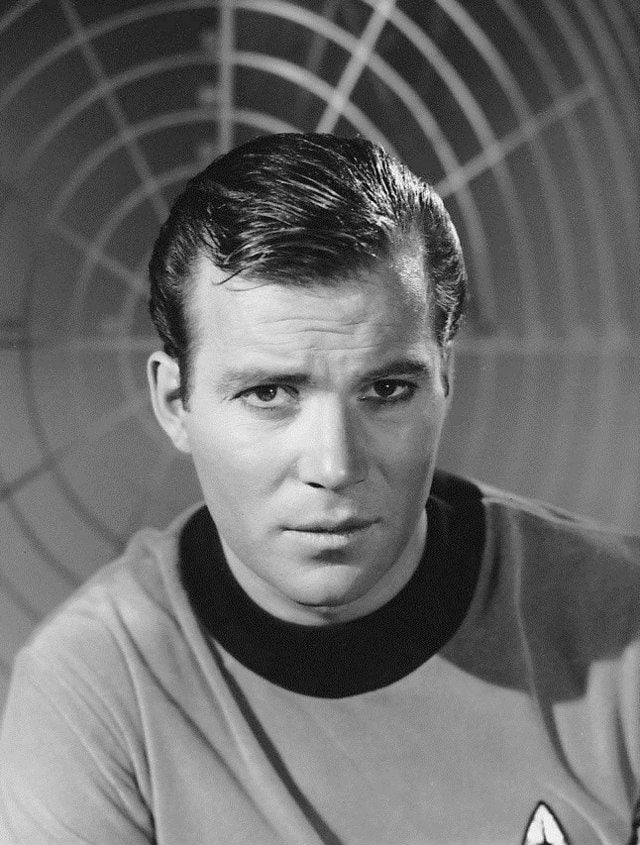
In the world of the TV series, the replicators of Picard’s Enterprise are a development of food synthesizers— simpler machines present on James Kirk’s Enterprise in the original Star Trek series (known as The Original Series , or TOS). These closely resemble the later replicators but were conceived by the writers of TOS more as highly advanced, mechanical food preparation devices instead of matter-energy converters. They, therefore, represented a televisual outing for a concept long popular in science fiction: the automatic food preparation device. A machine that performs complex autonomous physical tasks can reasonably be described as a robot, and, as early as 1899, Elizabeth Bellamy’s novel Ely’s Automatic Housemaid features a robot cook, which might be seen as a precursor to later food synthesizers. Unspecified “mechanical apparatus” was at work in the automated cafeterias of Edgar Rice Burroughs’s Mars. In his 1912 A Princess of Mars , Burroughs, probably inspired by the automat (a kind of vending machine café imported from Germany to the United States in 1902), describes “gorgeous eating places where we were served entirely by mechanical apparatus. No hand touched the food from the time it entered the building in its raw state until it emerged hot and delicious upon the tables before the guests, in response to the touching of tiny buttons to indicate their desires.”
Moving from Burroughs’s mechanical cafeterias to a Star Trek -style food synthesizer was simply a matter of miniaturization, and, by 1933, David H. Keller was imagining “a small but complete production laboratory, not much larger than [an] electric refrigerator … entirely automatic and practically foolproof.” In his story “Unto Us A Child Is Born,” Keller envisages a machine that can both create food and prepare it “for the table in any form desired by the consumer. All that was necessary was the selection of one of the twenty-five menus and the pressing of the proper buttons.” Only recently has this dream of a kitchen appliance-scale food synthesizer neared reality, with the launch of the Genie food replicator, explicitly inspired by Star Trek ’s replicator. The Genie, a device not much larger than a microwave with futuristic styling, claims to be “a kitchen in a box” that can make nutritious, freshly cooked meals in 30 seconds. However, it should be noted that the device relies on pods that contain dehydrated ingredients; in other words, the food preparation labor has simply been moved upstream in the process, and the Genie might be little more than a device for adding hot water to a cup of dried noodles.
/https://tf-cmsv2-smithsonianmag-media.s3.amazonaws.com/filer_public/97/87/9787a907-dd0b-4106-9b64-6e4c849f0ff8/3d_printer.jpg)
So what is meant by today’s technology boosters when they talk excitedly about Star Trek -inspired, real-life replicators? The technology to which they refer is the 3-D printer, a device that lays down some form of plastic (in the sense of malleable) medium in layers to build up a three-dimensional form. Such printers are heralded as the drivers of a second Industrial Revolution, in which manufacturing is distributed and universal, available to all through desktop 3-D printing machines. These devices are already available, usually restricted to fabrication using quick-setting plastics or resins, but larger and more specialized machines can print in media varying from living cells and foodstuffs to metal to mud or concrete. Large-scale concrete printers, for example, are suggested as a solution to housing crises, such as those found in refugee camps, where rapidly assembled, cheaply erected structures are needed. Meanwhile, biological implants and replacement tissues can be printed by laying down layers of cells on organic scaffolding, and, in the near future, it may be possible to print entire organs for transplant.
Although the 3-D printing community often plays up the lineage of inspiration from Star Trek ’s replicators to desktop fabricators, in practice, the former has a completely different mechanism. The true conceptual forefather of the 3-D printer is a 1964 story by Italian writer Primo Levi, “L’ordine a buon mercata” (“Order on the Cheap”). A mysterious multinational enterprise of dubious intentions makes available a device called the Mimer duplicator, which can create exact replicas of anything from money and diamonds to food and humans. It works by extruding “extremely thin superimposed layers” of a multielement substance named “pabulum.” This is a concise and extremely accurate description of how a modern-day 3-D printer works.
Star Trek featured gadgetry and devices that have since become iconic, and that have been directly responsible for inspiring the gadgetry and devices that have come to dominate modern personal technology—including the smartphone and the tablet computer—and perhaps soon to include portable, personal medical devices. Science and technology sometimes progresses in mighty leaps, but more generally it advances incrementally, contingent on prior research.
Reality Ahead of Schedule: How Science Fiction Inspires Science Fact is available from Smithsonian Books. Visit Smithsonian Books’ website to learn more about its publications and a full list of titles.
Excerpt from Reality Ahead of Schedule © 2019 by Carlton Books Limited
Screen Rant
3 star trek ships have crossed to & from the mirror universe.
Many Star Trek characters have met their Mirror counterparts but 3 starships have also crossed over from the Prime and Mirror Universes.
- Mirror Universe featured evil versions of Star Trek characters, with starships rarely crossing between universes.
- Star Trek: Enterprise revisited Mirror Universe with USS Defiant, while Star Trek: Discovery explored it with USS Discovery.
- ISS Enterprise appeared in Mirror Universe, where Spock implemented reforms for a more peaceful way of life.
Three Star Trek ships have crossed between the Mirror Universe and the Prime Universe. Introduced in the classic episode of Star Trek: The Original Series , "Mirror, Mirror," the Mirror Universe is a dark parallel reality featuring evil versions of Star Trek's characters. Although the Mirror Universe has popped up on several Star Trek series since its introduction, starships rarely make the jump between universes. In "Mirror, Mirror," it was a transporter malfunction that caused Captain James T. Kirk (William Shatner) and his USS Enterprise crew members to end up in the Mirror Universe, but that's not the only way characters have traveled between the two realities.
Star Trek: Enterprise revisited the Mirror Universe with season 4's two-part episode, "In a Mirror, Darkly," which saw the return of the original USS Defiant. Star Trek: Discovery 's characters aboard the USS Discovery also visited the Mirror Universe in the show's first season. In Star Trek: Discovery season 5, episode 5 , "Mirrors," the ISS Enterprise made its first appearance since its introduction in Star Trek: The Original Series. In the Mirror Universe, the authoritarian Terran Empire rose instead of the United Federation of Planets, and Starfleet is comprised of warships like ISS Enterprise that conquer and subjugate other worlds. Here are 3 starships that crossed over between Star Trek 's Prime and Mirror Universes.
I'm Glad Star Trek: TNG Never Did A Mirror Universe Episode
The uss defiant in star trek: enterprise, star trek: the original series season 3, episode 9 - "the tholian web" & star trek: enterprise season 4, episodes 18 & 19 - "in a mirror, darkly".
Although Star Trek: Deep Space Nine's USS Defiant would become the more famous ship to bear the name, there have been multiple ships named Defiant , including a 23rd-century Constitution Class starship first seen in Star Trek: The Original Series . In the TOS episode, "The Tholian Web," the USS Enterprise was sent to locate the Defiant , which they found trapped between universes, with its entire crew dead due to apparent insanity and mutiny. In a conflict with the Tholians, the Defiant was pushed through a spatial hole to an unknown destination.
The final destination of the USS Defiant was revealed in Star Trek: Enterprise's Mirror Universe two-parter, "In a Mirror, Darkly." The Defiant both traveled back in time and crossed into the Mirror Universe. The Mirror Universe Tholians then began to salvage the ship, but Commander Jonathan Archer (Scott Bakula) of the ISS Enterprise NX-001 plotted to steal the Defiant and use its advanced 23rd technology to install himself as Emperor of the Terran Empire. Archer commandeered the Defiant but en route to Earth, Lt. Hoshi Sato (Linda Park) poisoned Archer and took command of the Defiant, declaring herself Empress.
Star Trek: Deep Space Nine later introduced the Defiant Class USS Defiant, and the Mirror Universe had its own version although neither crossed universes.
The USS Discovery in Star Trek: Discovery
Star trek: discovery season 1.
Star Trek: Discovery season 1 spent five episodes in the Mirror Universe after Captain Gabriel Lorca (Jason Isaacs) manipulated the starship and crew back to the alternate reality he originated from. Previously unknown to the Discovery's crew, Lorca was actually from the Mirror Universe and intended to use Michael Burnham (Sonequa Martin-Green) to gain access to Emperor Philippa Georgiou (Michelle Yeoh) and her ship. Lorca altered the coordinates for Discovery's spore drive, knowingly taking the ship into the Mirror Universe.
In the Mirror Universe, Michael Burnham was the adopted daughter of Emperor Georgiou and plotted with her lover, Lorca, to kill her mother.
Once in the Mirror Universe, Discovery's crew had to masquerade as their evil counterparts as they searched for a way to get home. Burnham eventually discovered Lorca's ruse and thwarted his plan before Emperor Georgiou ultimately killed him. Lorca's betrayal deeply affected Burnham and the rest of Discovery's crew, and their time in the Mirror Universe greatly cost the Federation. When Discovery returned to the Prime Universe nine months after they had left, the Federation/Klingon War was going badly, but Burnham and Georgiou helped bring the conflict to an end.
Michelle Yeoh will reprise the role of Emperor Georgiou as the star of the upcoming Star Trek: Section 31 made-for-streaming film.
Star Trek’s 10 Most Evil Mirror Universe Characters
The iss enterprise in star trek: discovery, star trek: discovery season 5, episode 5 - "mirrors".
Star Trek: Discovery season 5 sends Captain Michael Burnham and the USS Discovery on an intergalactic treasure hunt for the powerful technology of the Progenitors , the creators of humanoid life. As part of their search, the crew of the Discovery finds a wormhole that leads to a pocket of interdimensional space, where they find the abandoned ISS Enterprise. The 23rd-century starship became a lifeboat for refugees fleeing the brutal Mirror Universe. According to a plaque on the ship, Mirror Universe Spock (Leonard Nimoy) implemented a series of reforms for a more peaceful way of life after his encounter with Prime Universe Captain Kirk (William Shatner).
Star Trek: Discovery season 5 filmed its ISS Enterprise scenes on the redressed USS Enterprise sets belonging to Star Trek: Strange New Worlds.
Although Spock was killed for his beliefs, he inspired others to set out in search of a better life. Despite an undoubtedly difficult journey, at least some of the refugees from the Mirror Universe's ISS Enterprise made a life for themselves in the Prime Universe. One of the refugees, a woman named Dr. Cho, became one of the seven scientists who helped hide the Progenitors' technology. She placed her clue on the ISS Enterprise, which remained undisturbed for centuries. Star Trek: Discovery season 5 has revisited several storylines from Star Trek's history, and the return of the ISS Enterprise serves as a nice shout-out to the Star Trek series where it all began.
Star Trek: The Original Series, Star Trek: Enterprise, & Star Trek: Discovery are all available to stream on Paramount+.
Star Trek: The Original Series
Star trek: enterprise, star trek: discovery.

Food synthesizer
- View history
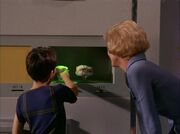
A food synthesizer
The food synthesizer , food replicator or food processor was a common device used aboard 23rd century starships and starbases for synthesizing foods and beverages . Replacing the older protein resequencer , these food receptacles served as a supplement to the ship's chef and were predecessors to 24th century replicators . Unlike replicators, with which food orders were made by voice command, food orders given to food synthesizers were usually made by program tapes or cards inserted into a slot.
- 1 Technical specifications
- 4 External link
Technical specifications [ ]
The two prevailing glucose matrices for food synthesis in the 2250s were the Katzman glucose matrix and Gupta glucose matrix . The USS Enterprise used the " Una glucose matrix ," though, named for its creator, Number One , which combined the best qualities of each with a more palatable result. ( ST : " Q&A ")
According to a commercial for Tribbles cereal , food synthesizers were equipped with replicator safety protocols , which made it impossible for anyone to synthesize any type of hazardous foods . Still, overriding the program was possible. ( ST : " The Trouble with Edward " credit cookie )
History [ ]
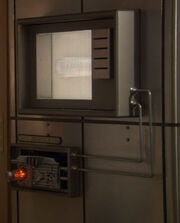
The Vulcan food processor
In the mid- 22nd century , T'Les had a food processor in her house on Vulcan . When T'Les' daughter T'Pol and Trip Tucker were visiting the residence in 2154 , the food synthesizer was broken, so T'Les asked Tucker if he could fix it, but he didn't have an opportunity to reply, due to the arrival of Koss . Later however, he did the repairs and fixed it. ( ENT : " Home ")
Food synthesizers were located in numerous locations throughout Constitution -class starships, including the transporter room . ( TOS : " Tomorrow is Yesterday ", " This Side of Paradise ")

A food synthesizer aboard the USS Discovery
A series of food synthesizers were located in the mess hall aboard the Crossfield -class starship USS Discovery . When Commander Saru offered Michael Burnham some blueberries aboard the Discovery in 2256 and she responded that they tasted different from ones she had eaten in prison , Saru reckoned that was less likely to be "a food synthesizer issue" than a result of the environment she was eating them in, which Burnham casually agreed with. ( DIS : " Context Is for Kings ")
In 2268 , when the Enterprise was infested with tribbles , it was discovered that they had entered into the food processors aboard the ship through one of the ship's air vents. ( TOS : " The Trouble with Tribbles "; DS9 : " Trials and Tribble-ations ")
One of the reasons Rojan cited for neutralizing non-essential Enterprise personnel during the trip to the Andromeda Galaxy was to conserve the food synthesizer's resources. ( TOS : " By Any Other Name ")

Food cards used in the food synthesizers
Nurse Chapel offered the surviving children of the Starnes Exploration Party a selection of cards with differing flavors of ice cream to choose from. All they had to do was pick a card and the computer would mix their favorite combination. ( TOS : " And the Children Shall Lead ")
Upon taking on a contingent of Klingon officers, led by Kang , aboard the Enterprise , Captain James T. Kirk ordered Johnson to have the food synthesizers programmed to accommodate their guests. ( TOS : " Day of the Dove ")
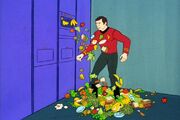
A malfunctioning voice-commanded food synthesizer
By 2270 , the food synthesizers aboard the Enterprise were converted over to a voice-command ordering system. ( TAS : " The Practical Joker ")
Romulan D7-class battle cruisers were also equipped with food synthesizers. ( TAS : " The Practical Joker ")
The term food synthesizer was still used occasionally while explaining the more advanced replicator to others. ( TNG : " The Vengeance Factor ")
See also [ ]
- Protein resequencer
External link [ ]
- Food synthesizer at Memory Beta , the wiki for licensed Star Trek works
- 2 ISS Enterprise (NCC-1701)
- More to Explore
- Series & Movies
Published May 15, 2015
Trek-like Replicator Now a Reality
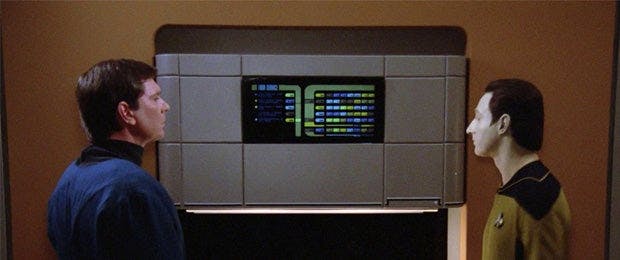
And the latest example of Star Trek tech becoming reality is the Genie, a device that echoes Trek 's food replicators. Created by a pair of Israeli entrepreneurs, Ayelet Carasso and Doron Marco, it relies on pods—akin to the inner workings of espresso machines—to turn natural baking ingredients and freeze-dried fruits and vegetables into personalize meals... in just 30 seconds. Eventually, Marco told the news service Reuters, Genie will know a person's microbiome and will prepare the pod specifically for that person. "You will eat better, even tastier and healthier," he said. Marco also shared his desire for the Genie to be put to use in countries without enough food to feed their populations.
"In our world, we are getting fat and we are throwing away a lot of food, (and) in their world, they don't have any food," he said. "So if you use Genie, you can distribute the food better, you can have the shelf life much longer without the preservatives, give the people better food for them. We can even the food distribution in the world. That's a very, very important goal for us."
Get Updates By Email

IMAGES
VIDEO
COMMENTS
Starfleet. In Star Trek a replicator is a machine that can create (and recycle) things. Replicators were originally seen to simply synthesize meals on demand, but in later series much larger non-food items appear. The technical aspects of replicated versus "real" things is sometimes a plot element.
Per an odd after-credits scene in the Star Trek: Short Treks episode "The Trouble with Edward", 23rd century food synthesizers apparently incorporated replicator safety protocols, although it remains unconfirmed that replicators incorporated these as well. Replicators are considered as Star Trek predicting technology, like 3D printing, in part.
Replicators are essential machines in the "Star Trek" universe. This device can reproduce food, tools, and sometimes even random viruses. Depending on the writer's imagination, it can make almost anything. In times of need, the replicator is the only thing that can feed the crew. And being so far from Federation ports and basses, replicators ...
Of course, Star Trek uses replicators for more than just food, with the matter-energy converters being used to synthesize medicines, clothing, equipment, and much more. Industrial replicators can even be used to create machinery and in construction projects. They also contain scanners, allowing them to scan the structure of an object in order ...
Star Trek envisions the future of humanity to be one of incredible achievements made possible by evolved philosophies as well as technologies. This hopeful view of tomorrow is perhaps the reason so many have dreamed of inventing real-life versions of Star Trek tech -- from the transporter to the tricorder -- and the replicator is one of the most coveted.From a scientific perspective, aspects ...
Hey Trekkies! In this video, I tell you everything you need to know about the super impressive Replicators. Unlike Stargate, these replicators won't kill you...
A Star Trek replicator might be possible, but not nearly as soon, says Sarri — maybe 100 years down the line. Those replicators of the future could be useful in areas in beyond outer space. They could provide food in places where putting a chef might be dangerous, such as a war zone.
On-screen, replicators are perhaps one of the more magical technologies in "Star Trek." Replicators are small alcoves on the wall, equipped with a giant computer, usually located inside crew quarters.
A vehicle replicator was a large-scale replicator that was able to quickly "create any means of transport", including shuttlecraft. The USS Protostar was equipped with such a replicator in its shuttlebay. The vehicle replicator worked by stringing together individual replicated components at a time, providing audio updates for each ten percent of completion. (PRO: "Starstruck") It was capable ...
Replicators do not work like Star Trek's transporter technology. Transporters essentially take all the components of the original things and simply reconstruct it elsewhere. It's like building a ...
A replicator can create any inanimate matter, as long as the desired molecular structure is on file, but it cannot create antimatter, dilithium, latinum, or a living organism of any kind; in the case of living organisms, non-canon works such as the Star Trek: the Next Generation Technical Manual state that, though the replicators use a form of ...
Star Trek: Prodigy Season 1 is available to stream on Netflix outside of markets including Canada where it is available on CTV.ca and the CTV App, France on France Televisions channels and Okoo, in Iceland on Sjonvarp Simans Premium, as well as on SkyShowtime in the Nordics, the Netherlands, Portugal, Spain, and Central and Eastern Europe. Star Trek: Prodigy is distributed by Paramount Global ...
Season 1 Episode 26Episode: "The Neutral Zone"After decades of dormancy there appears to be evidence that the Romulans have crossed the Neutral Zone and are ...
In this video, we explore the feasibility of replicator technology, a staple of the Star Trek universe that creates anything instantly out of thin air. We de...
A replicator is a device that uses transporter technology to dematerialize quantities of matter and then rematerialize the matter in the form of another object, such as food or equipment. By the 24th century, replicators were a common piece of equipment aboard Federation starships and facilities. Prior to replicators, some races have been known to use simpler devices called protein ...
An industrial replicator was a large-scale replicator that was typically used for construction purposes. The United Federation of Planets gave Bajor several industrial replicators following the end of the Occupation. (DS9: "For the Cause") In 2372, the Federation of Planets intended to provide Cardassia with twelve industrial replicators with the intention of the Cardassians using them to ...
Replicator rations were an energy-conservation policy instituted on the USS Voyager, limiting the usage of the ship's replicators for each crewmember. The use of rationing for the replicator was a policy that was not consistently implemented; rather, it was done when the ship's available power supplies were limited. When Voyager was able to replenish its energy reserves, rationing was ...
Star Trek has been prescient about future technology ever since showing off a nascent cell phone in the pilot episode of the original series. But that doesn't make the creation of this real-life replicator any less astonishing.. Throughout the incarnations of Star Trek, the replicator has produced a variety of human necessities to the good Starfleet folks exploring the outer reaches of space ...
As with several other iconic Star Trek technologies, replicators are directly responsible for inspiring developments in real-life technology, which use 3-D printing to create food, meals, plastic ...
Sometimes likened to Star Trek's Borg, the Replicators are a relentless, technological menace. This artificial form of life came from innocent beginnings, but went on to consume whole worlds … even conquering advanced civilizations with their sheer numbers. The Replicator storyline played out over several seasons of SG-1. Below we've ...
The replicator might have groundbreaking implications, but it does have some inherent limitations as well: the objects it produces are small, and require special synthetic resin to produce. But it's an exciting new technology - and one that could lead to a Star Trek future.
A molecular factory is a long-predicted technology that, in theory, should be able to accomplish some of what the Replicator from "Star Trek" does, although not nearly as cleanly as on the show ...
Star Trek: Prodigy — Replicators. The Federation's way of doing things might suit Jankom Pog just fine. Star Trek: Prodigy Season 1 is available to stream on Netflix outside of markets including Canada where it is available on CTV.ca and the CTV App, France on France Televisions channels and Okoo, in Iceland on Sjonvarp Simans Premium, as ...
Star Trek: Discovery season 1 spent five episodes in the Mirror Universe after Captain Gabriel Lorca (Jason Isaacs) manipulated the starship and crew back to the alternate reality he originated from. Previously unknown to the Discovery's crew, Lorca was actually from the Mirror Universe and intended to use Michael Burnham (Sonequa Martin-Green) to gain access to Emperor Philippa Georgiou ...
The food synthesizer, food replicator or food processor was a common device used aboard 23rd century starships and starbases for synthesizing foods and beverages. Replacing the older protein resequencer, these food receptacles served as a supplement to the ship's chef and were predecessors to 24th century replicators. Unlike replicators, with which food orders were made by voice command, food ...
Trek-like Replicator Now a Reality. And the latest example of Star Trek tech becoming reality is the Genie, a device that echoes Trek 's food replicators. Created by a pair of Israeli entrepreneurs, Ayelet Carasso and Doron Marco, it relies on pods—akin to the inner workings of espresso machines—to turn natural baking ingredients and freeze ...